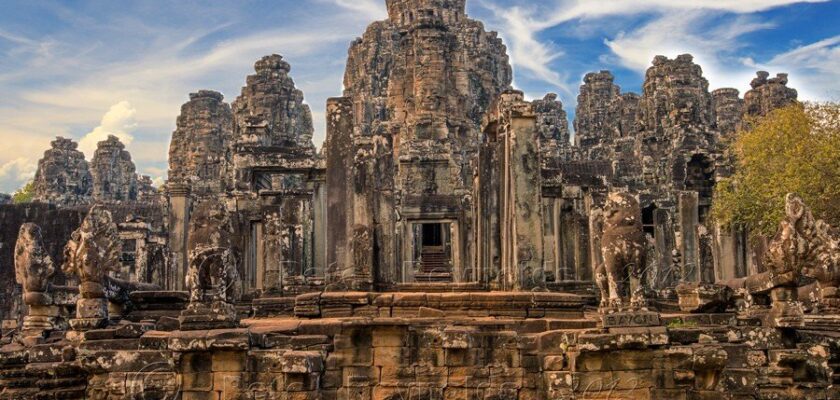Bayon Temple
Bayon, a temple with huge stone heads found at every turn, is the jewel of Angkor Thom. There are a total of 216 heads on the 54 towers of the temple. If you look closely, there are no identical faces – they are all very different, although at first glance they look similar. Depending on the light and time of day, the faces can be cheerful and kind or sad – and even terrifying. No matter where in the temple you are, you will be “looking” at least five or six stone faces.
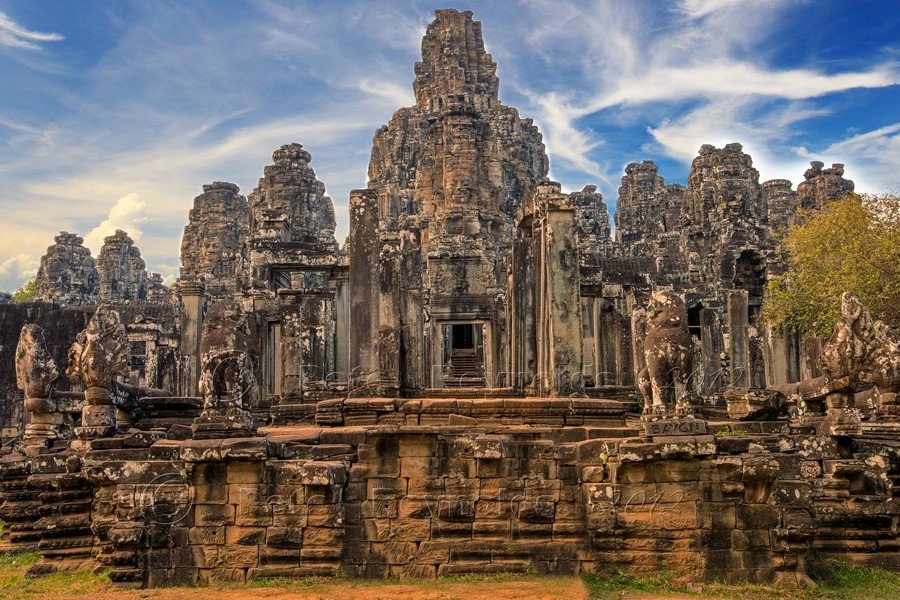
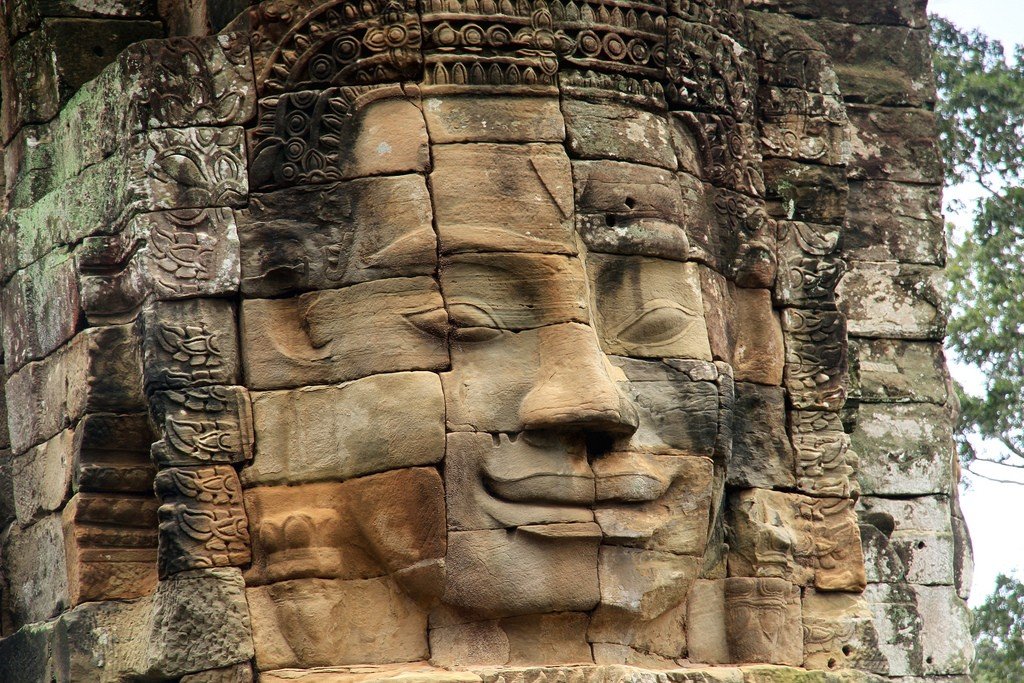
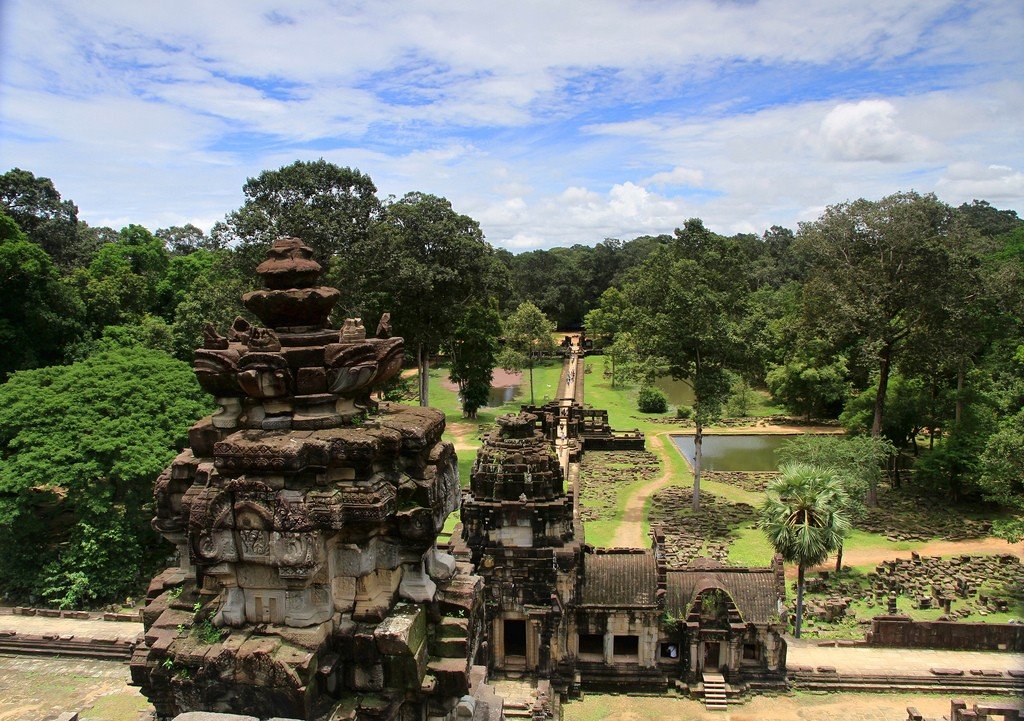
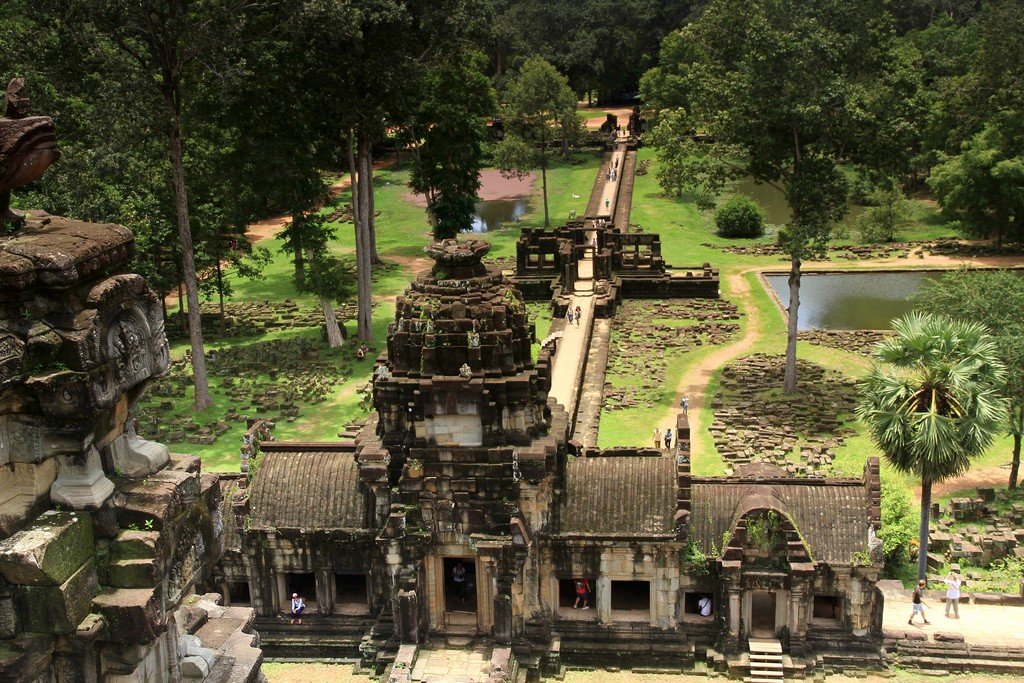
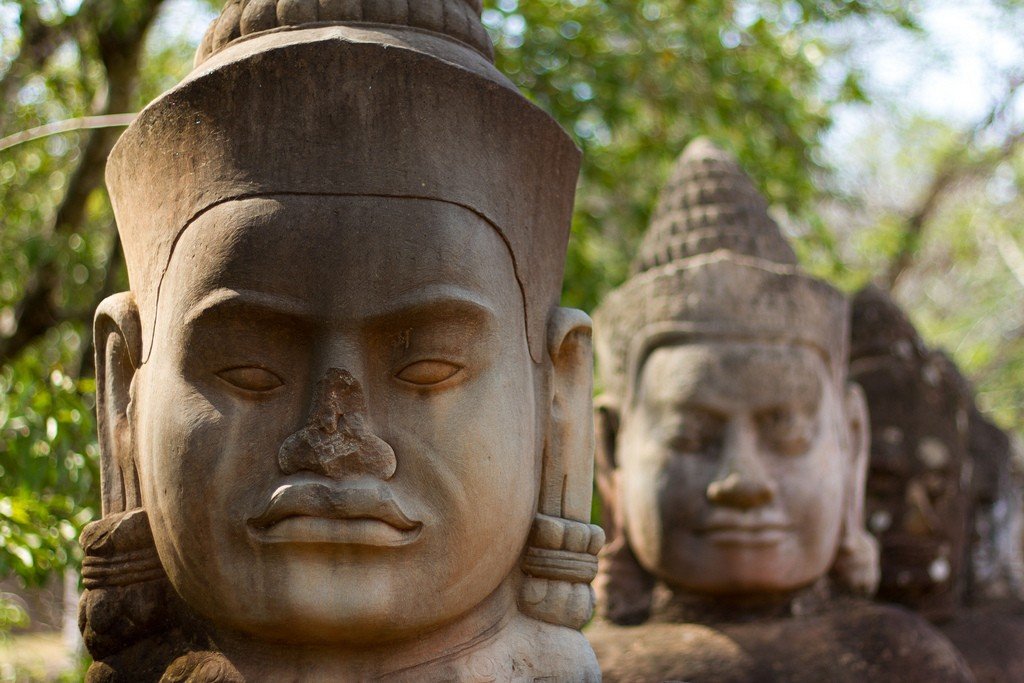
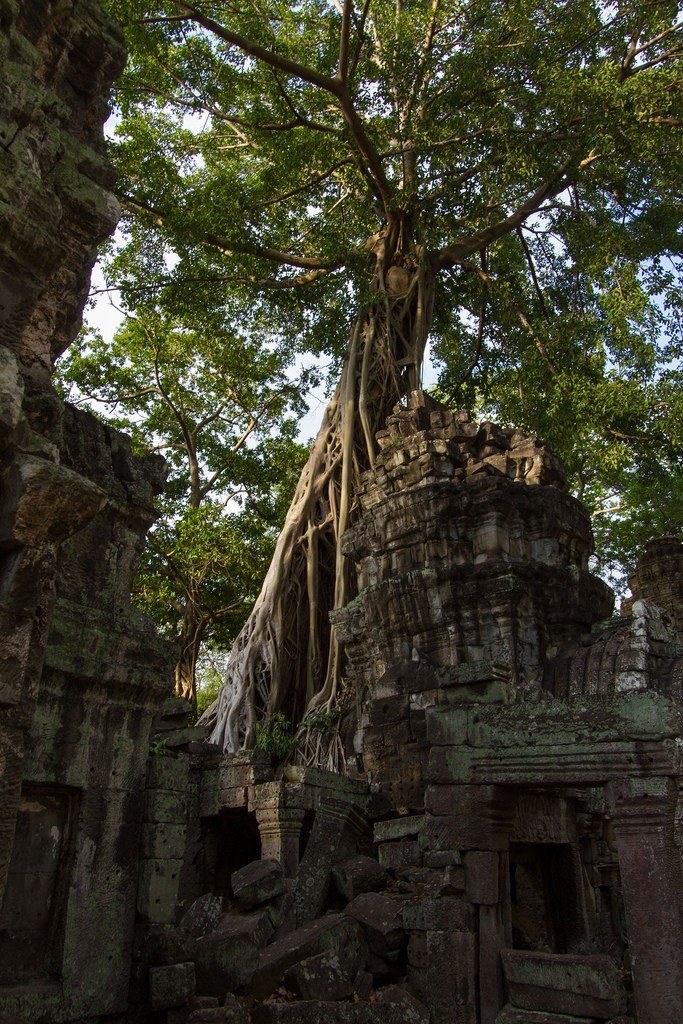
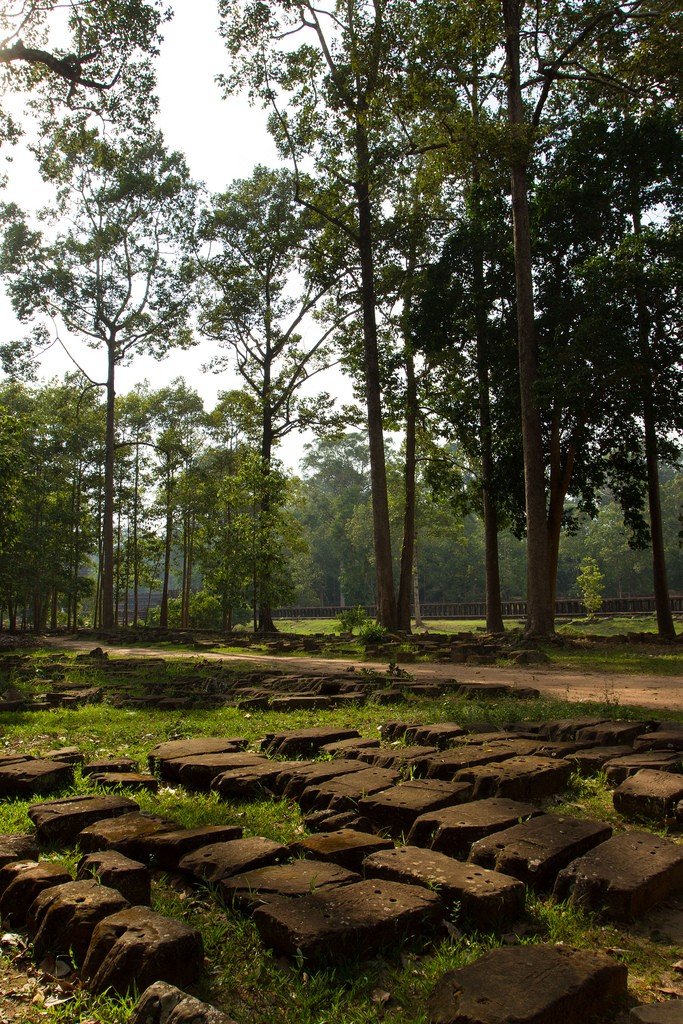
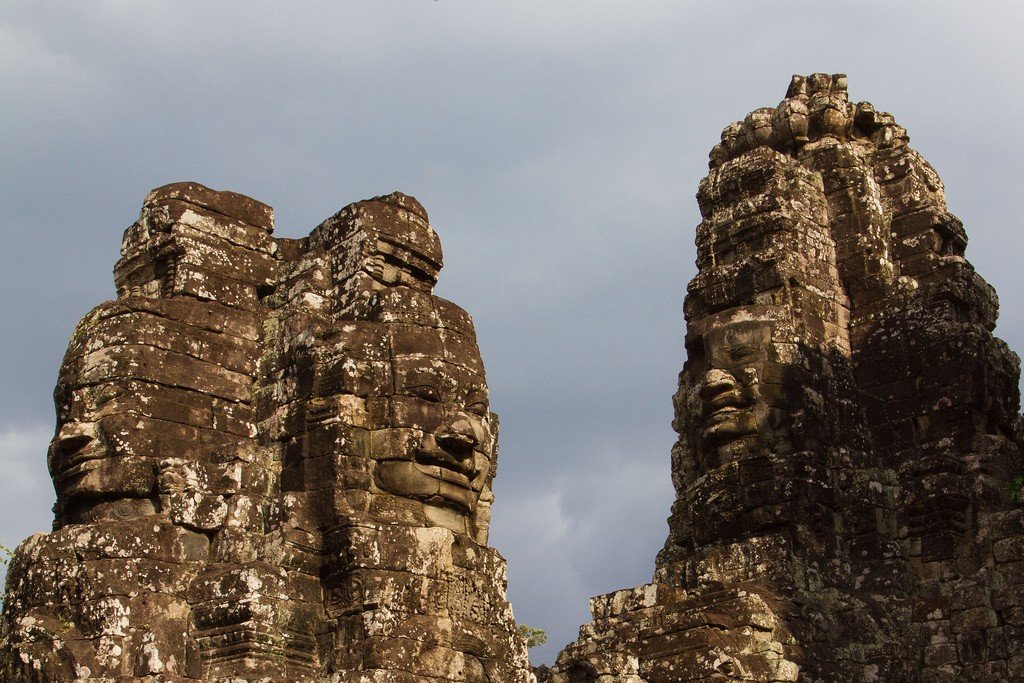
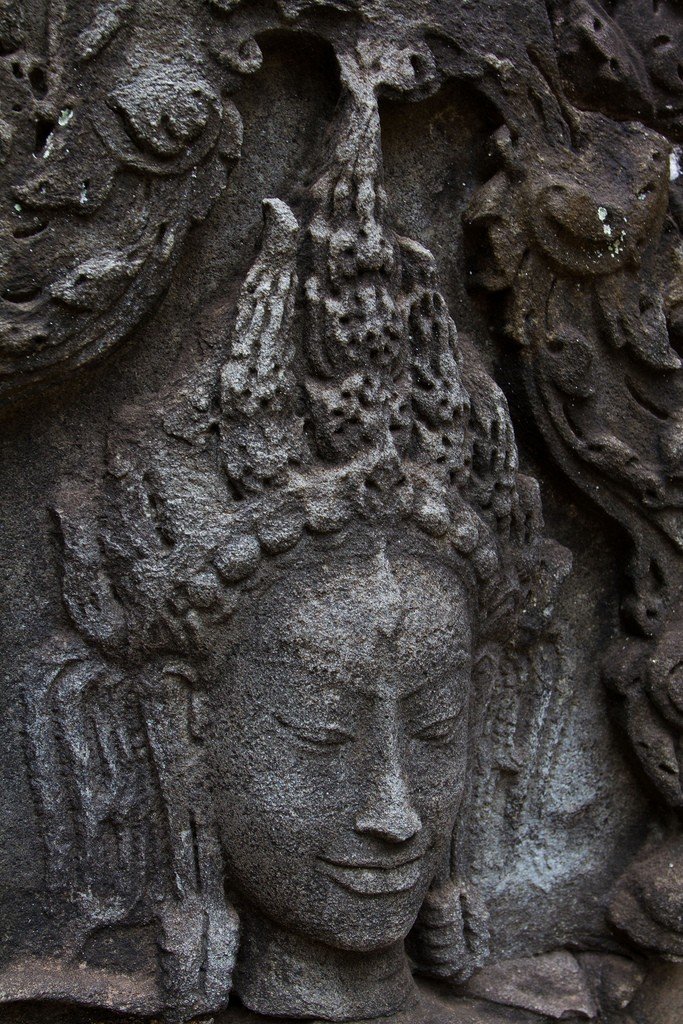
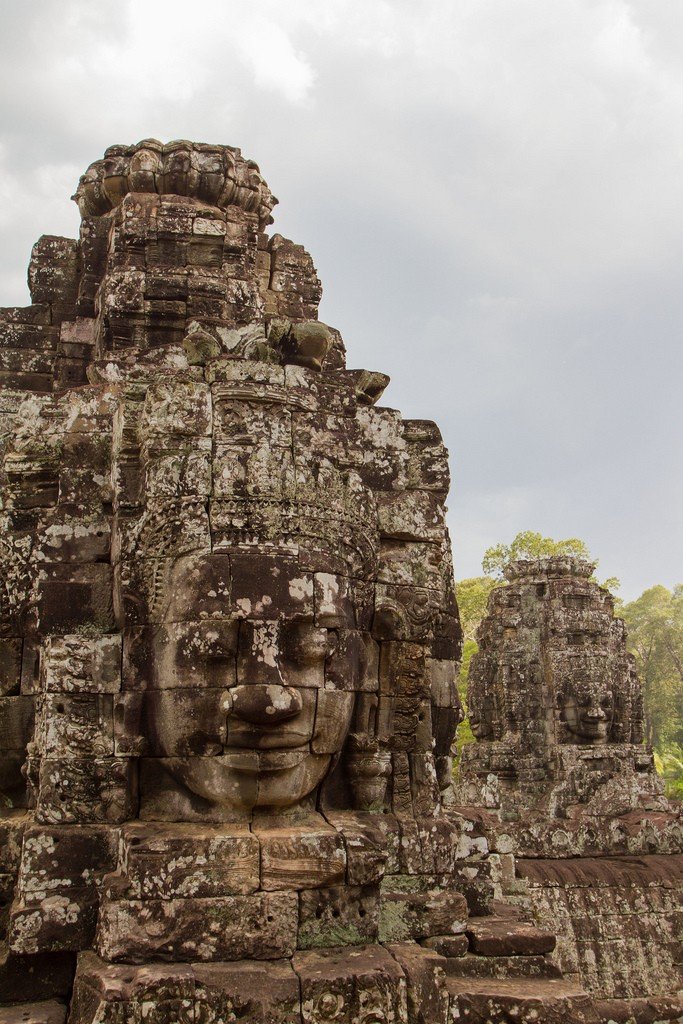
General Information
Who is depicted on the faces in the Bayon Temple is not entirely known. Some sources believe it is Avalokiteshvara, a bodhisattva, the personification of boundless compassion in Buddhism. Others believe that the statues are of King Jayavarman VII himself. In favor of the latter theory is the apparent similarity between King Jayavarman VII, whose portrait is kept in the Guimet Museum in Paris, and the stone faces on the Bayon towers. There is also a theory uniting the two versions that it is still Avaloki Teshwara, and the model for the sculptures was the king. From afar, the temple is not particularly impressive, it seems compressed within a limited space, stone chaos. This impression is created because of the galleries on the sides of the temple and the upper terrace, between which there is almost no free space. However, climb up to the upper tier, sit between the stones, and you can feel that you are sitting somewhere in the heavens, among the ancient gods. No other temple in Angkor has such an amazing atmosphere as the one at the top of Bayon. Spend at least half an hour to an hour here in the morning, try to feel this wonderful feeling.
.
At the top of the temple in the morning, while there is no heat, you can often see students, covered with textbooks, or Europeans who came to Cambodia for a few months or years, with a book in hand. It’s hard to imagine a better place to spend a few hours studying or relaxing than high above the jungle. The bayon consists of three finished tiers, the lower two are square, the upper one is a round tower. King Jayavarman VII wanted to finish the temple in his lifetime, but was not sure he would be able to wait until the end of construction, so on his orders the craftsmen would completely finish each tier and only then begin building the next.
The walls of Bayon are covered with elaborately carved bas-reliefs, with 11,000 figures carved into the 1,200 meters of stone surface depicting various scenes of Cambodian life. It depicts scenes from battles with Cham’s troops, the fall of Angkor, scenes from daily life, royal hunting, worship of the gods…. The best preserved bas-reliefs are on the first tier. It is more convenient to examine them from the eastern entrance to Bayon, moving clockwise. The bas-reliefs of the eastern gallery represent images of a military campaign: warriors, elephants, ox-drawn carts, cavalrymen and musicians. In the south gallery you can see scenes from the grand battle on Tonle Sap Lake in 1177. In the north gallery, acrobats, jugglers and local animals are skillfully carved on the walls..The bas-reliefs of the first tier (clockwise from the east gate) are:
- Chamas on the march. This three-tiered panorama is just south of the east gate of Bayonne. The Cham are a people still living in Vietnam, Cambodia, and Thailand. In the front row, Khmer warriors walk from the battlefield. Note the elephants and bullock carts – almost exactly the same ones still in use today. The second row shows coffins being carried from the battlefield. In the center of the third row is Jayavarman VII in the shade of an umbrella. He rides on a horse accompanied by many concubines (left). Linge Prayer. The first panel north of the southeast corner depicts the Hindu linga prayer. It may have originally been an image of the Buddha, later replaced by a Hindu king.
- Sea Battle. The next panel has some of the best carved bas-reliefs. It features a combination of images of Khmer and Cham sea battles (with their heads covered) and pictures of daily life on the shores of Tonle Sap Lake, where the battle took place. Look closely for images of people looking for lice in each other’s hair, hunting scenes, and, at the western end of the panel, a woman giving birth. .
- The Chamas are defeated. The next panel continues with scenes from everyday life, and the sea battle moves to the shore – the Chams are completely defeated by the Khmer. Here we can see two people playing chess (or some similar game on a board), a cockfight and women selling fish in the market. Then there are scenes of cooking and serving food at a celebration of the Khmer victory over the Cham.
- Military Procession. The last section of the south gallery, depicting a military procession, is unfinished, as is the next panel showing elephants being led down the mountains. The Brahmans have climbed two trees to escape the tigers.
- Civil War. This panel depicts scenes that some scholars claim represent civil war. Groups of people, some of whom are armed, fight against each other, the fighting intensifying as war elephants and warriors are included in the melee.”
- The All-Seeing King. The battle continues on a smaller scale in the next panel. Below, an antelope is swallowed by a huge fish. Among the smaller fish are shrimp, the inscription underneath states that the king will find them even if they hide.
- Victory Parade. This panel depicts a procession featuring the king carrying a bow and his warriors. It appears to be a celebration of victory.
- The circus has come to town. The west corner of the north wall depicts a Khmer circus. You can see a strongman holding three dwarfs and a man on his back spinning a wheel with his foot, above is a group of tightrope walkers. To the right of the circus, the royal retinue looks down from the terrace at the procession of animals. Some bas-reliefs in this section were left unfinished.
- Land of Plenty. Two rivers, one just beyond the doorjamb and the other three meters to the right, abound with fish. Chum Retreat. West of the north gate at the very bottom of the three-tiered unfinished scene depicts the Cham armies – defeated and driven out of the Khmer Empire. One panel depicts the advancing Cham armies, and the heavily damaged panel that follows shows the Chams (left) pursuing the Khmer. The Chams are looting Angkor. This panel shows the war of 1177, when the Khmer were defeated by the Cham and Angkor was looted. A wounded Khmer king climbs down from the back of an elephant and the warlord is carried in a hammock suspended on sticks. Directly above them, desperate Khmer are getting drunk. The Chams (right) furiously pursue their defeated enemies.
- The Chams enter Angkor. This panel depicts another encounter between the two armies. Note the standard bearers among the Cham troops (right). The Cham were defeated in this war, which ended in 1181.
One of the mysteries of Bayonne is that mankind today has found it physically impossible to rebuild it without using cement as a binding material. Modern scientists and builders have not been able to trim stones of similar size with a given precision so as to incorporate them into the temple without cement. Bayon tried to rebuild it using the same methods it was built with, but nothing came of it and modern technology had to be used.
.